Indian doctrine of minimum credible nuclear deterrence envisages “No First Use” (NFU) policy and a triad of nuclear counterstrike capability. Its current land based Agni-2 missile range is limited to about 3,300 Km and partly because its RV is mismatched with the new lighter thermonuclear payload.
India requires a long range missile to provide robust second strike capability. A missile that can be dispersed far and wide in the Indian mainland, it’s far flung islands or its blue water naval assets dispersed across the world’s oceans.The ability to reach all corners of a potential challenger requires a range of 5,000 to 8,000 km. India is thus developing larger diameter family of Agni missile, with a heavier payload and a longer range but in a compact configuration, i.e. thicker but shorter length. This development is also driven by need for a more assured retaliation that can defeat emerging ABM defence.
Such capability requires a compact missile that can carry ABM countermeasure payload along with weapons, in a configuration similar to MIRV, albeit with state-of-the-art decoys.
The successor to the Agni-II and the ultimate development of the Agni family is the Agni-III. This missile would also fulfill India’s immediate deterrent requirements against the People’s Republic of China (PRC).
The missile test has been postponed three times ostensibly to rectify some technical issues as well as geo-political constraints1. The missile is scheduled to be flight tested three times2 before entering service in 2008. The missile cost is about 1/6th of similar missile developed by other nations.
Description
Agni-III is a short & stubby, two-stage, solid fuel missile that is compact and small enough for easy mobility and flexible deployment on different types of surface and sub-surface platforms.
The Agni-III has two solid fuelled stages with an overall diameter of 1.8 meters. The first stage is about 5.4 meters long, the second stage about 2.5 meters long with a 1 meter vented inter-stage.The missile will support a wide range of warhead configurations, with total strategic payload mass ranging from 600 kg to 1,800 kg3.
High missile accuracy permits effective use by using conventional warhead reportedly ranging between 2490 -3490 Kg. This makes it useable in smaller sub-nuclear conflicts, a trend now seen in American long range missiles.
Re-Entry Vehicle: RV-Mk.4
Agni-III RV supports a wide range of weapons, with total payload mass ranging from 600 to 3,490 Kg. The missile range is a function of payload (see graph below).
This is the first Re-Entry Vehicle (RV) that is designed & optimised for the new lighter 200Kt thermonuclear payload weapon and corresponding to a very long range. The 200Kt yield weapon reportedly weights less than 450 Kg, however some sources indicate a mass of between 300 to 200 Kg4. The sharp high‘²’ (Ballistic coefficient5) RV design employs 17 cm diameter blunt nose with a nose cone section 2 meter long and half angle of 11°, followed by a 0.65 meter long cylindrical section that is terminated by with a 0.5 meter long, 1.5 meter diameter interface to the missile adapter.
Compared to Agni-II this RV is shorter, more voluminous and just 3.3 meter long. The high ‘²’ RV in combination with an all carbon composite body enables higher re-entry speed even with a lighter weight payload6.
With joint Indo-Russian revival of GLONASS, India will have access to military grade precision19 from GLONASS that will be very useful for Agni-III.
Instead of conventional bus architecture, the RV Mk-4 is self-contained with high altitude thrusters, navigation and re-entry control systems, making it very accurate. It is world’s first all composite RV and uses no metal backup7. The all carbon composite re-entry heat shields with multi-directional ablative carbon-carbon re-entry nose tip make it very light and tough8. The new lightweight composite case can withstand temperatures of up to 5,000º centigrade9 thus its conic half angle choice is more aggressive, yet capable of all re-entry velocities. This very light RV mass uniquely enables disproportionate large increase in missile’s range. The RV has been flight tested before its use in Agni-III10.
Propulsion
The Agni-III has two solid fuelled stages of 1.8 meters diameter. This diameter is compatible with a recently tested Indian sub-surface launch system, that has a 2.4 meter diameter launch tube aperture11. Both stages use light weight composite material case to realise high fuel mass fraction that is necessary for a small but long range missile.
First Stage: The first stage is of approximately 24 tonnes mass and length of 5.4 meters. The ISP is believed to be better than Agni booster and closer to large solid motor currently in use by Indian space launchers. The stage has 21 tonnes (approx) of high-energy solid fuel and 45 seconds burn time. Composite material case reduced the dead weight increasing its propulsion efficiency. It uses a high-pressure reaction control12 for yaw, pitch and roll thus it does not employ dispenses with air fins enabling container stowage & launch.
Second Stage: The 1 meter long vented interstate is light- weight and ensures better vehicle control and reliable second stage separation. The second stage mass is about 8 tonnes and have a length of 3.25 meters (including 0.75 m payload adapter). The stage uses composite motor casings to maximise fuel mass fraction that is critical to realise long range, especially with lighter payload. The second stage has flex nozzles to provide necessary in-flight trajectory control.
Agni-III Configuration
Some parameters below are estimated based on available news reports, trade practice and known Indian capability.
Navigation & Accuracy
Agni-III largely carries the proven avionics set of Agni-II, however, in view of its larger range, it is augmented by a new true-inertial platform based Inertial Navigation System. With joint Indo-Russian revival of GLONASS, India will have access to military grade precision19 from GLONASS that will be very useful for Agni-III. Agni-III will also benefit from Indian Regional Navigation Satellite System (IRNSS)20 when it is ready in few years time, to ensure guaranteed national access to precision navigation. These systems enable unprecedented accuracy to Agni missiles in a conventional role.
Agni-III Range vs Payload
Missile range & payload mass are inversely related. It is useful to contrast the variation between Agni-III and Agni-II. It is interesting to note that Agni-III with its larger mass fraction design has a greater capability and sensitivity for lighter payload, whereas Agni-III is not very sensitive for lighter payload. Of course Agni-III is a heavier missile compared to Agni-II that offers a broader payload range.
Sources & References
1. Evaluating India’s land-based Missile Deterrent. Indian Defense Review Vol-19(4) Oct-Dec 2004, ISSN 0970-2512, Arun Vishwakarma, Dr Sanjay Badri Maharaj. Lancer Publishers & Distributors, New Delhi.
2. Raj Chengappa, Weapons of Peace: The Secret Story of India’s Quest to be a Nuclear Power (New Delhi: Harper Collins Publishers India, 2000, ISBN 81-7223-332-0).
3. Defence Research & Development Organisation (www.drdo.com)
4. DRDO periodicals “Technology Focus” bi-weekly (www.drdo.com/pub/techfocus/welcome3.htm)
5. Indian Defence Technology: Missile Systems (DRDO, Ministry of Defence, December 1998).
6. Nuclear Threat Initiative (www.nti.org)
7. http://www.nbr.org/publications/analysis/pdf/vol13no3.pdf VOLUME 13, NUMBER 3, JUNE 2002. “Ballistic Missiles and Missile Defense in Asia”
8. Nuclear Weapon Archive, ‘India’s Nuclear Weapons Program: Present Capabilities’ http://nuclearweaponarchive.org/India/IndiaArsenal.html
Notes
1. Agni 3 test launch likely by year end, Deccan Herald July 04,2005
2. ‘India ready to test fifann re an advanced 3000 Km Agni III missile in the next six months – hypersonic missiles getting developed’ India Ddaily May 17, 2005
3. “India will test-fire longest range missile: Natrajan” NEW DELHI, outlookindia.com MAY 17 2005 (PTI)
4. Also “India’s Agni III will span 3,000 km” PTI. Times Of India, MAY 17, 2005
5. Agni-III missile to be test-fired by year-end. The Hindu, 30 March 2005.
6. India Readies for Agni III Launch, Agni III ready for tests, although schedule still in flux, Aviation Week & Space Technology, 02/13/2006.
7. Agni-III ready to go, DRDO awaits govt nod EXPRESS NEWS SERVICE May 15, 200a 6
8. Agni-III can lift off in 2-3 weeks Rajat Pandit, TIMES NEWS NETWORK May 15, 2006
9. Agni-III ballistic missile ready for launch, HindustanTimes.com February 3, 2006
10. ‘India has tech to go beyond Agni-III’, Our Bureau, Hyderabad The Hindu Business Line, May 20, 2005
11. http://www.blonnet.com/2005/05/20/stories/2005052002820300.htm ”It would have a total of three test flights, including one with the user. It can carry a payload (warhead both conventional and nuclear) of 1-1.2 tonnes.”
12 . Agni-III to be test fired by year-end. Deccan Chronicle, 30 March 2005. “…capacity to carry conventional as well as nuclear warheads of over 1,500 kg.”
13 .India Cancels Agni III Test, UPI-Washington, May 31, 2006, “The Agni III is said to be able to deliver a 440-pound to 550-pound warhead with a high degree of accuracy.” http://www.spacewar.com/reports/India_Cancels_Agni_III_Test.html
14 . The ballistic coefficient ² is a measurement of an object’s ability to move through a fluid. It takes into account the effects of an object’s density and its skin friction, and is expressed as: ² = m * CD / A where m: mass, CD: coefficient of drag, A: area.
15. This was an issue with the earlier RV Mk-2 design. The older Mk-2 with its blunt nose is an all range RV, however for lighter payload its ² is relatively low, thus slowing down the RV at the fag end of its trajectory.
16. A young achiever T.S. SUBRAMANIAN, Frontline Volume 22 - Issue 20, Sep. 24 - Oct. 07, 2005 “Metal made the heat shield heavy, so the weaving and winding of the carbon- fibre around the shield was a demanding but necessary task to lighten it..”.
17. ibid
18. Composites: Use in saucepan handles, artificial limbs and the AGNI CURRENT SCIENCE, VOL. 86, NO. 3, 10 FEBRUARY 2004 http://www.ias.ac.in/currsci/feb102004/372.pdf “India has developed propulsion and re-entry systems of aerospace vehicles that need to operate in high temperature regimes such as 3000–5000°C and meet the aero thermal environment of re-entry. Scientists have successfully flight-tested the unique all-carbon composite re-entry heat shield with multi-directional carbon–carbon re-entry nose tip and control surfaces in the AGNI missile systems.”
19. A success story T.S. SUBRAMANIAN Frontline Volume 22 - Issue 20, Sep. 24 - Oct. 07, 2005 http://www.hinduonnet.com/fline/fl2220/stories/20051007002009200.htm “The four-year-old Advanced System Laboratory in Hyderabad has contributed immensely to the success of India’s missile development programme, which has reached the intercontinental ballistic missile stage. ... The ASL has already achieved a breakthrough by developing a heat-shield made of carbon composite without any metal back-up. (The heat-shield protects the warhead and avionics from the high temperatures generated by the missile’s re-entry into the earth’s atmosphere.) “We were the first one to do the carbon composite heat-shield without any metal back-up. It has been designed, developed and flight-tested for Agni, and it is perhaps the first heat-shield of its kind in the world,”
20. Launching platforms for Project K-15. http://www.drdo.com/pub/techfocus/aug04/missile13.htm
21. High-pressure reaction control system. The Hindu Andhra Pradesh. Hyderabad News City-based firm develops critical components for Agni, GSLV
22. Trade estimate
23. ibid
24. Estimated by using Bharat-Rakshak Ballistic Rocket Simulator
25. 4 Trade estimate
26. Geometric resolution from photo evidence
27. ibid
28. “Indo-Russian tie-up on Glonass satellite system” Deccan Herald, 20 Dec 2005. http://www.deccanherald.com/deccanherald/dec202005/state1861820051219.asp
29. Indian Regional Navigation Satellite System approved, 9/5/2006




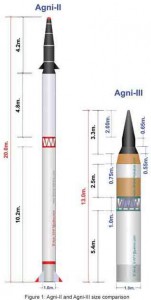
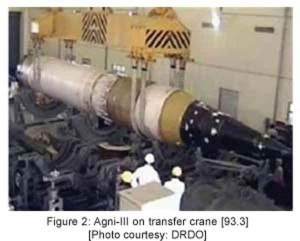
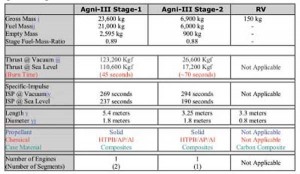
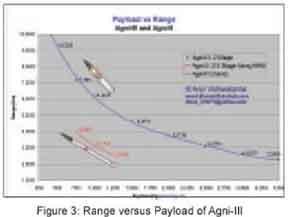
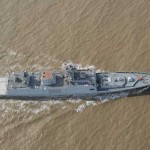
Apologies but I have stopped writing in last 8 years, to focus my energy elsewhere. After demise of Capt. Bharat Verma (owner of IDR) no one has asked me for next article.
people wait and search for your articles but this time you have not come up with anything new when we have reached Agni V stage
They are just LONG or have LONG range as-well?
What poor sense of judgement must have failed in range estimation tests please don’t make comments just for the heck of it